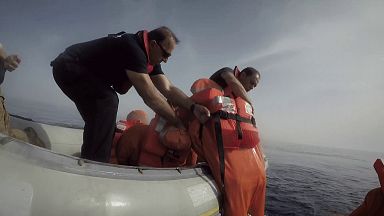The cruise industry is booming, with more than 25 million passengers expected to be carried worldwide in 2019. But with the increase in numbers comes an increase in risk. Now technology is coming to the rescue.
The cruise industry is booming, with more than 25 million passengers expected to be carried worldwide in 2019.
But with the increase in numbers comes an increase in risk.
When the Italian cruise ship Costa Concordia ran aground off Tuscany in January 2012, 32 people died in the resulting chaos.
Now technology is coming to the rescue.
Researchers and cruise companies are working together to test a wireless system – LYNCEUS - that is able to track and account for every passenger.
Antonis Kalis, Head of Research and Development at SignalGeneriX, told Futuris: “Various cruise companies already provide electronic tools for their passengers so that they can make purchases or access their cabins. So we can integrate our tracking device in a key card or in a bracelet.”
To quickly find everyone, even in a crisis situation, the crew can use a wireless network that covers the entire ship and shows all the trackers on a computer screen.
Developers stress that this function will only be used in real emergencies, so everyone’s privacy is safe.
Yiannis Panaretou, chief executive of OptionsNet IT Services, said the system would be invaluable to help locate missing people.
“The ship safety officer can see where the crew and passengers are located, and there’s a way to focus on a single missing person — you can use a search panel to find exactly where that person is.”
The developers say thousands of these devices are already being tested by major cruise companies, all of them at a fraction of the cost of GPS alternatives. They hope they will be certified for commercial use in the near future.
The system will also be able to trace passengers in a worst case scenario, where people are missing at sea.
Commercial vessel operators can integrate the LYNCEUS devices into life jackets.
In an emergency, rescuers will be able to use handheld antennas, or fly over the area with drones or helicopters, sending signals that the smart life jackets would automatically pick up.
This should help find victims as quickly as possible, before they succumb to hypothermia.
Angelos Ktoris, a naval architect and marine engineer at the Maritime Institute of the Eastern Mediterranean, said the device has a working range of up to one kilometre, even in stormy conditions.
The system was tested as a part of an international maritime search and rescue exercise in Cyprus - Argonaut 2019. The drill simulated a major humanitarian operation in the Mediterranean Sea.
“We are impressed by the results of the Lynceus2Market project. This system can really help search and rescue personnel operating at the scene when time is of the essence,” Lieutenant Commander Andreas Charalambides, head of the Joint Rescue Coordination Centre in Cyprus, told Futuris.












